18th A HI Exam 2 (Final)
1/39
There's no tags or description
Looks like no tags are added yet.
Name | Mastery | Learn | Test | Matching | Spaced |
|---|
No study sessions yet.
40 Terms
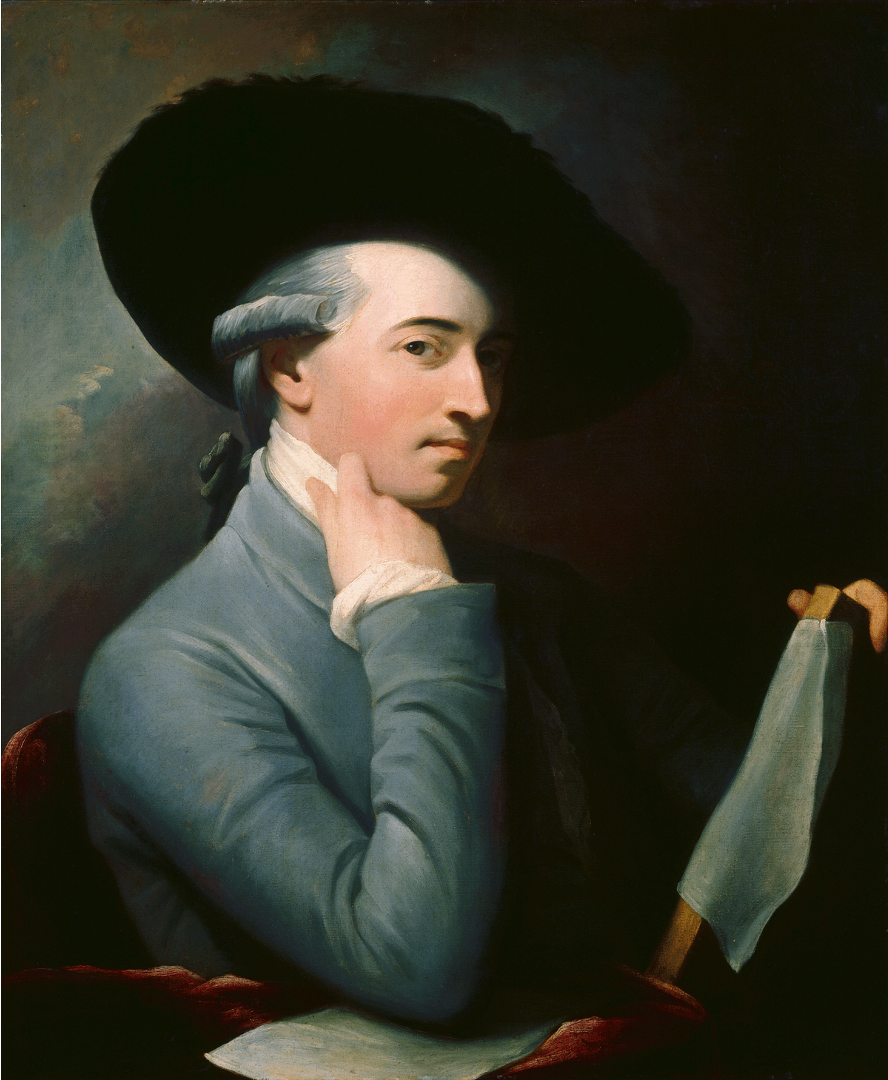
Benjamin West, Self-Portrait, 1760s
18th cent America/colonies - European influences on education
Artists trained like Europeans or went to Europe
West thought English art was superior but used “American” to promote himself
His clothing and simple background are very different from London’s stuff
America = melting pot of influences
self governess, self-accomplishment, self- made, similar to what enlightenment is!
Painting in England in the Eighteenth Century: Joshua Reynolds, Thomas Gainsborough, and Benjamin West
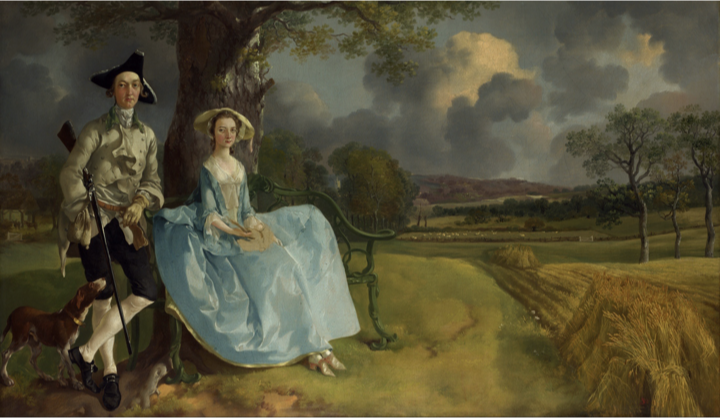
Thomas Gainsborough, Robert and Mary Andrews, c.1748─9.
Helped establish a school of landscape painting in Britain. Was a founding member of the Royal Academy.
Painting in England in the Eighteenth-Century: Joshua Reynolds, Thomas Gainsborough, and Benjamin West
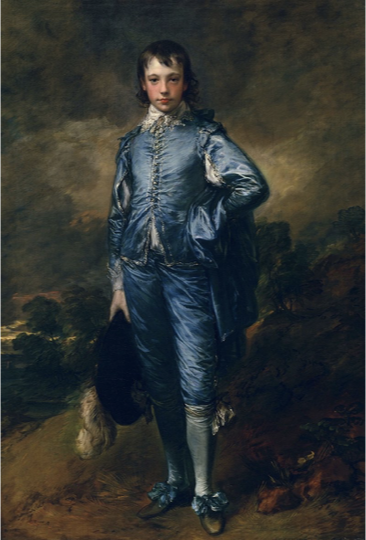
Gainsborough, the Blue Boy, 1770.
Who? His nephew? The son of a wealthy hardware merchant? Homage to Anthony van Dyck in clothing.
Reynolds suggested warm colors, Gainsborough contradicts him. Rivalry.
Famous due to owner allowing people in house to see it.
Painting in England in the Eighteenth-Century: Joshua Reynolds, Thomas Gainsborough, and Benjamin West
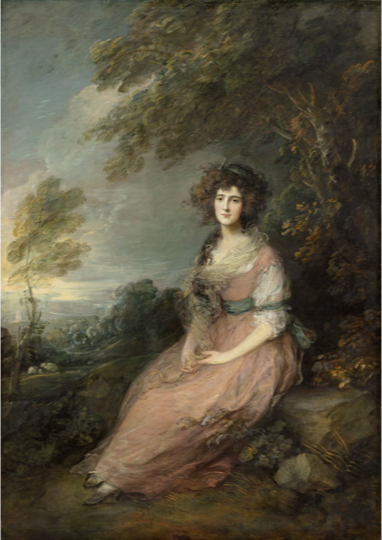
Gainsborough, Mrs. Richard Brinsley Sheridan, c.1785
Painting in England in the Eighteenth-Century: Joshua Reynolds, Thomas Gainsborough, and Benjamin West
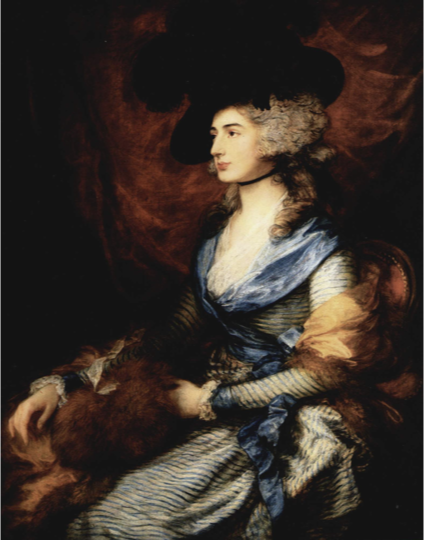
Gainsborough, Mrs. Siddons, 1783─5
Painting in England in the Eighteenth-Century: Joshua Reynolds, Thomas Gainsborough, and Benjamin West
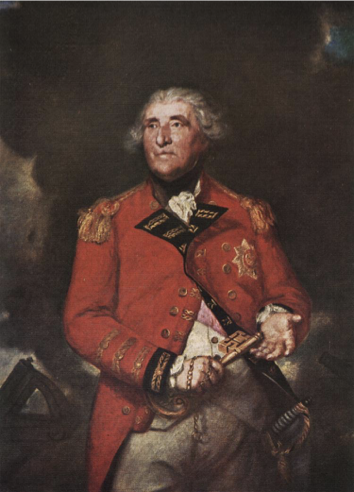
Sir Joshua Reynolds, Lord Heathfield, 1787. “Grand Style”
One of the founders and 1st president of the Royal Academy of Arts, knighted by King George III in 1769.
The Academy was in London, founded 1768.
Before this, there were some small, private academies sponsored by art and science organizations, manufacturing and commerce, in 1755. Hogarth was part of this group, thus his commercial interests.
First exhibit of contemporary art dates 1769, with 136 artworks. Public lectures as well. 77 students, but by 1830, 1,500 students. Followed by Gainsborough and West.
Each elected member had to donate a work for their diploma. ”Discourses” are a series of lectures. Taste and discernment.
His portraits engage the audience –in knowledge, imagination, memory and emotion. Helped raise the status of artists in Britain.
Here, Lord Heathfield was a national hero, defended Gibraltar against France and Spain in 1779. He holds the key of the rock. Rock has religious parallel.
English officer, commandant of the fortress of Gibralter during the American Revolution, defended it against the Spanish. The key he holds is the fortress of Gibralter.
Painting in England in the Eighteenth-Century: Joshua Reynolds, Thomas Gainsborough, and Benjamin West
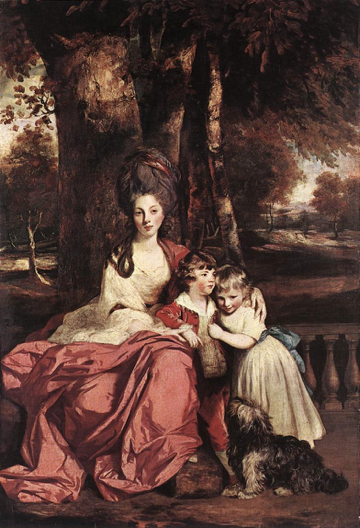
Reynolds, Lady Elizabeth Delme and Children, c.1777─80. Idealized, majestic feminine grace, pyramidal composition.
Painting in England in the Eighteenth-Century: Joshua Reynolds, Thomas Gainsborough, and Benjamin West
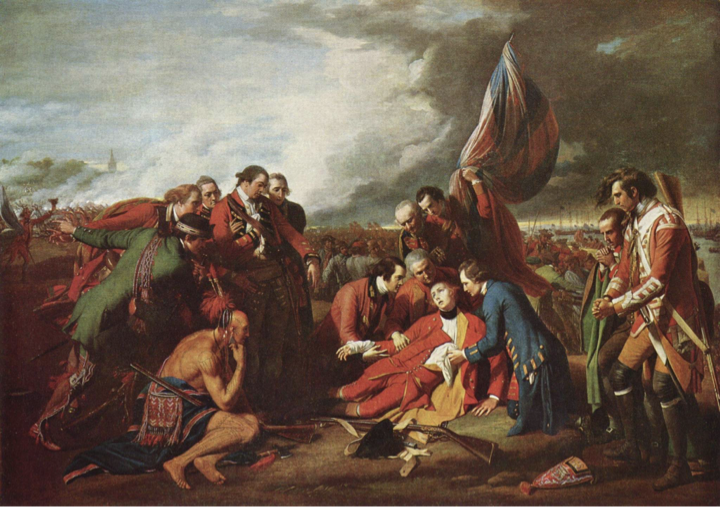
West, Death of General Wolfe, 1770
Earlier west painting
Wolfe losing battle in red coats (england i think lol) surrounded by loyal followers
American blue coat is still honoring him
made him look kind of like a hero? not exactly anti-england
Painting in England in the Eighteenth-Century: Joshua Reynolds, Thomas Gainsborough, and Benjamin West
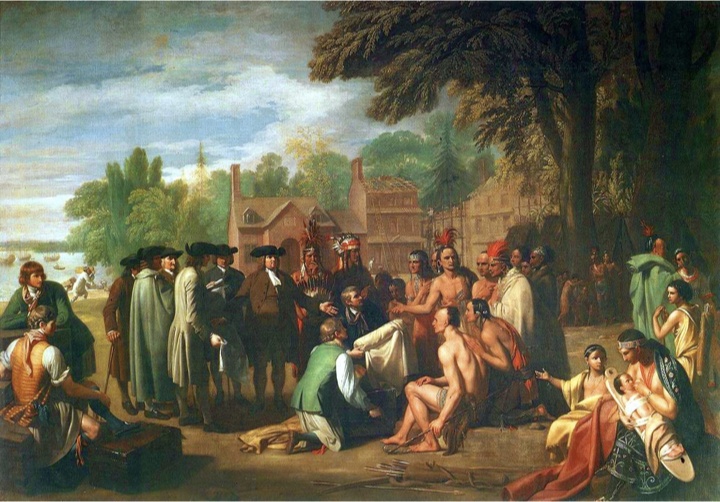
West, Death of General Wolfe, 1770
West is creating myths on how America was founded
William Penn trading with natives “PEACEFULLY”
Believes that he was well traveled/exotic enough to both represent england and US i think
Thought he could paint Natives right
Promoted lots of myths, ideals, and humility
Painting in England in the Eighteenth-Century: Joshua Reynolds, Thomas Gainsborough, and Benjamin West
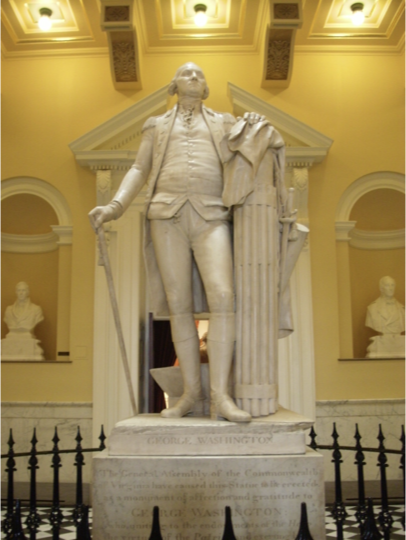
Jean-Antoine Houdon, Portrait of George Washington Standing, 1780s, Virginia State Capitol in Richmond. Carrara marble.
Born at Versailles in 1741, studied at the Academy, won the Prix de Rome
Portrait sculpture specialist.
He met Benjamin Franklin in Paris, who invited him to come to DC, in 1785, the year he began this work.
There was a ned because there were new buildings like capitals
WHY FRENCH ARITIST? US didn’t really have good sculpture schools yet esp with marble
Why Houdon? Thomas Jefferson and Benjamin Franklin recommended Houdon. 18c America favored Neoclassicism and white marble.
Carrara marble is from Italy!
Houdon took measurements and drawings from life = ACCURATE
Right hand – cane, left arm rests on fasces, or bundle of wooden rods, an ancient Rome symbol of power through justice. Cape and rod on top, and plow behind him. Depicted in military attire rather than classical.
Neoclassical sculpture: in Europe and the United States
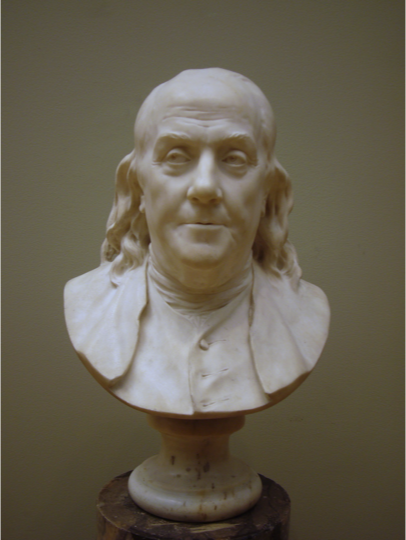
Houdon, Bust of Benjamin Franklin, 1778
Kind of how kings had portraits EVERYWHERE, now in America these people wanted SCULPTURES everywhere
again accurate
mouth looks like it’s about to speak “speaking likeness” to make the sculpture more lively
looks to the side to “extend beyond”
simple clothing but the buttons arent perfectly closed, gives it more timely moment?
Neoclassical sculpture: in Europe and the United States
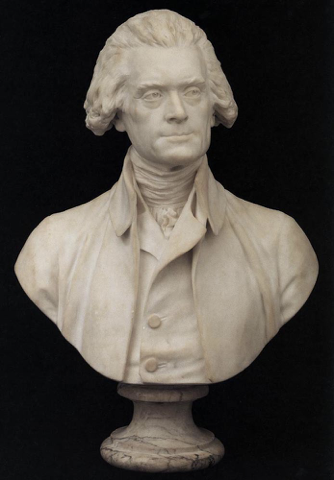
Houdon, Bust of Thomas Jefferson, 1789
jefferson was an architect
looking to the side
contemporary clothing
Neoclassical sculpture: in Europe and the United States
Houdon
FR sculpture
worked in rome until he met US patrons and worked at US
accurate sculptures

Antonio Canova, Cupid and Psyche, 1790s. Canova was from Venice
Grandfather was a stone mason.
Went to Rome to study in 1780
one of the first to transition from Rococo to Neoclassicism, and Michelangelo.
Commissions from French and English patrons
Commissioned In 1787 by John Campbell, British politician. After he died, the sculpture went to the Louvre Museum in 1824.
artistic goal: Divine beauty. Images of beauty.
overall aesthetic for antiquity/neoclassical
Classical subject in very complicated composition and in risky marble
showing off his technique
Neoclassical sculpture: in Europe and the United States
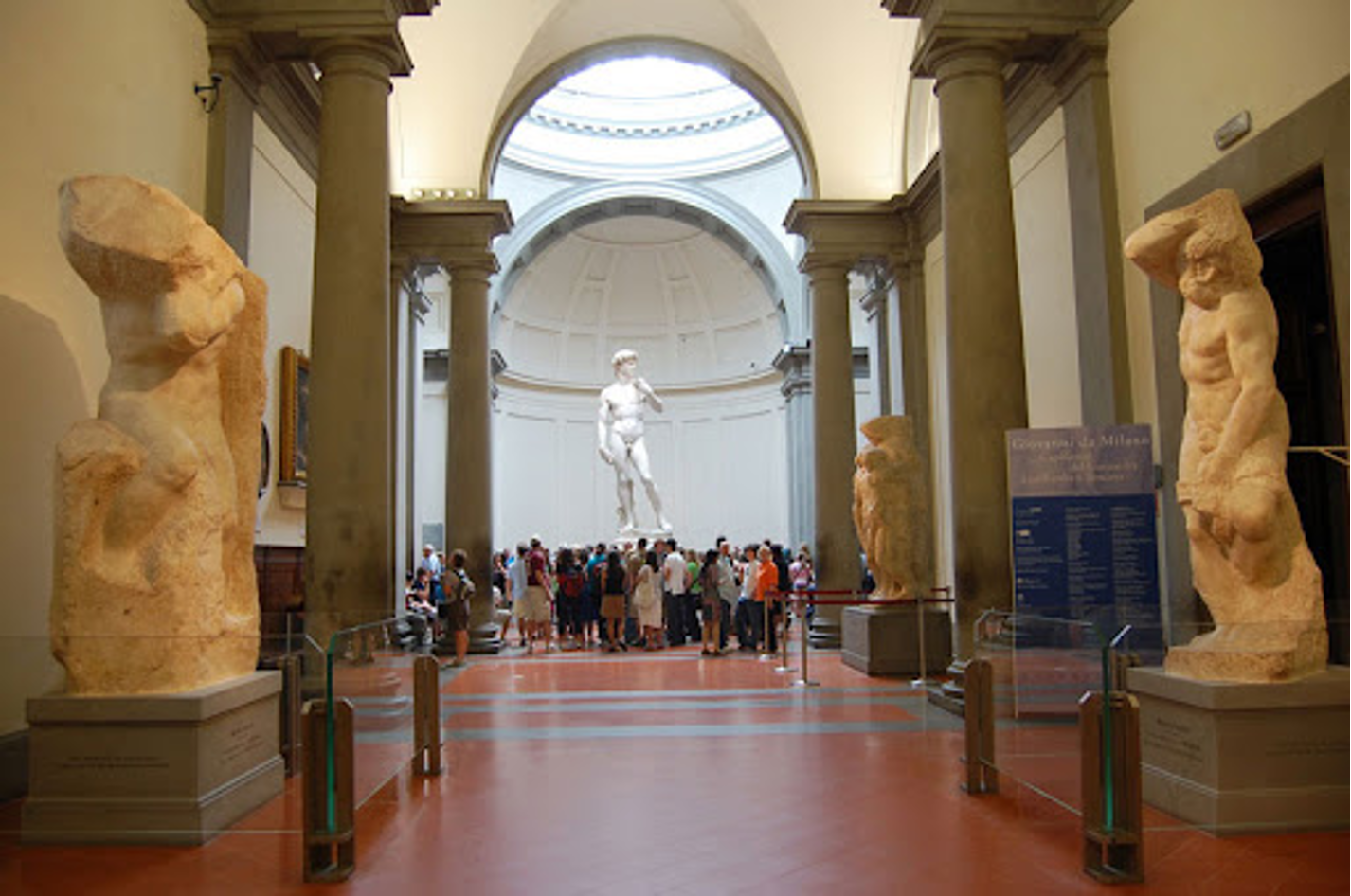
Michelangelo, David, 1504-05
european grand tour era
unfinished carvings leading to it in hallway
first colossal/LARGE marble sculpture I think?
made to be seen from far away
unproportionate because it was supposed be angled
Not Carrara marble because stone was given by maria de medicini but he was sad because he likes Carrara
prior to him, sculpture was lower in the hierarchy compared to painting
more manual
He made this an “elevated” art form
Now sculptures in 18th cent are looking at works like him like classical antiquity but through the lens of renaissance
PRE - Neoclassical sculpture: in Europe and the United States
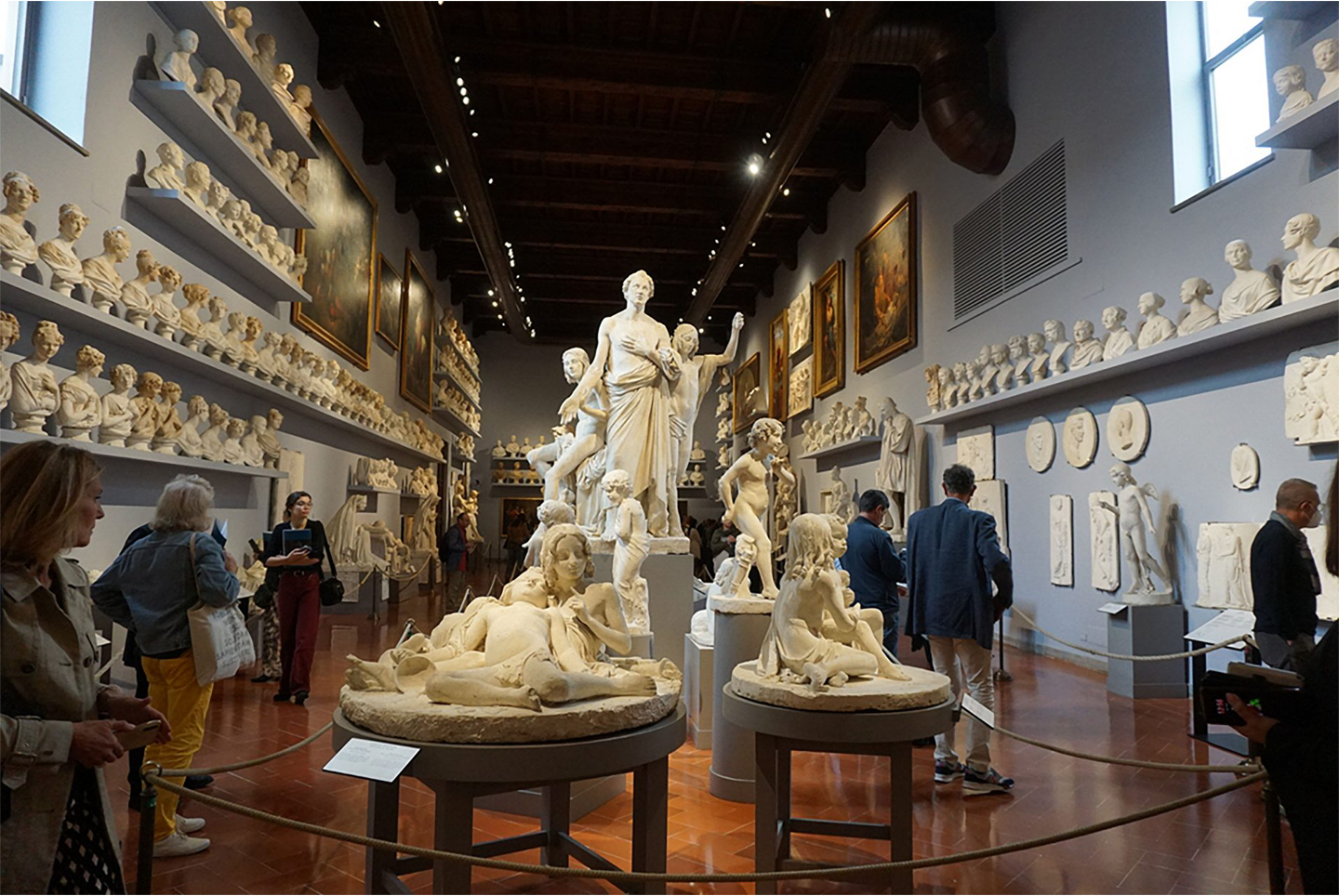
Accademia, Florence. (museum) 1500s
artist would cast their sculptures
they would make a small clay sketch, then life size plaster, then figure out distance with like nails, then use those measurements to carve into the final
could be used by art students
PRE - Neoclassical sculpture: in Europe and the United States

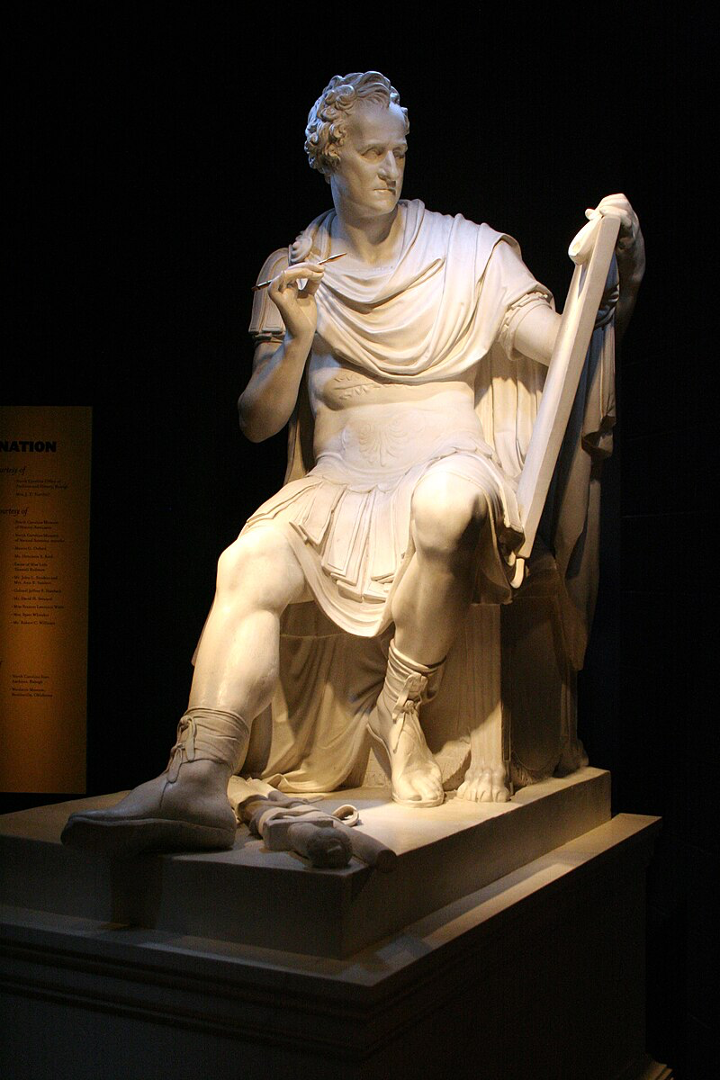
Canova, plaster replica of George Washington, 1820
George wanted to be represented in American Military clothing but since he was in Italy he made it super ancient Rome
not approved by George lol
Recommended by Thomas Jefferson.
Commissioned by the North Carolina State House that burned in 1831.
that’s why this one is a plaster cast
Neoclassical sculpture: in Europe and the United States
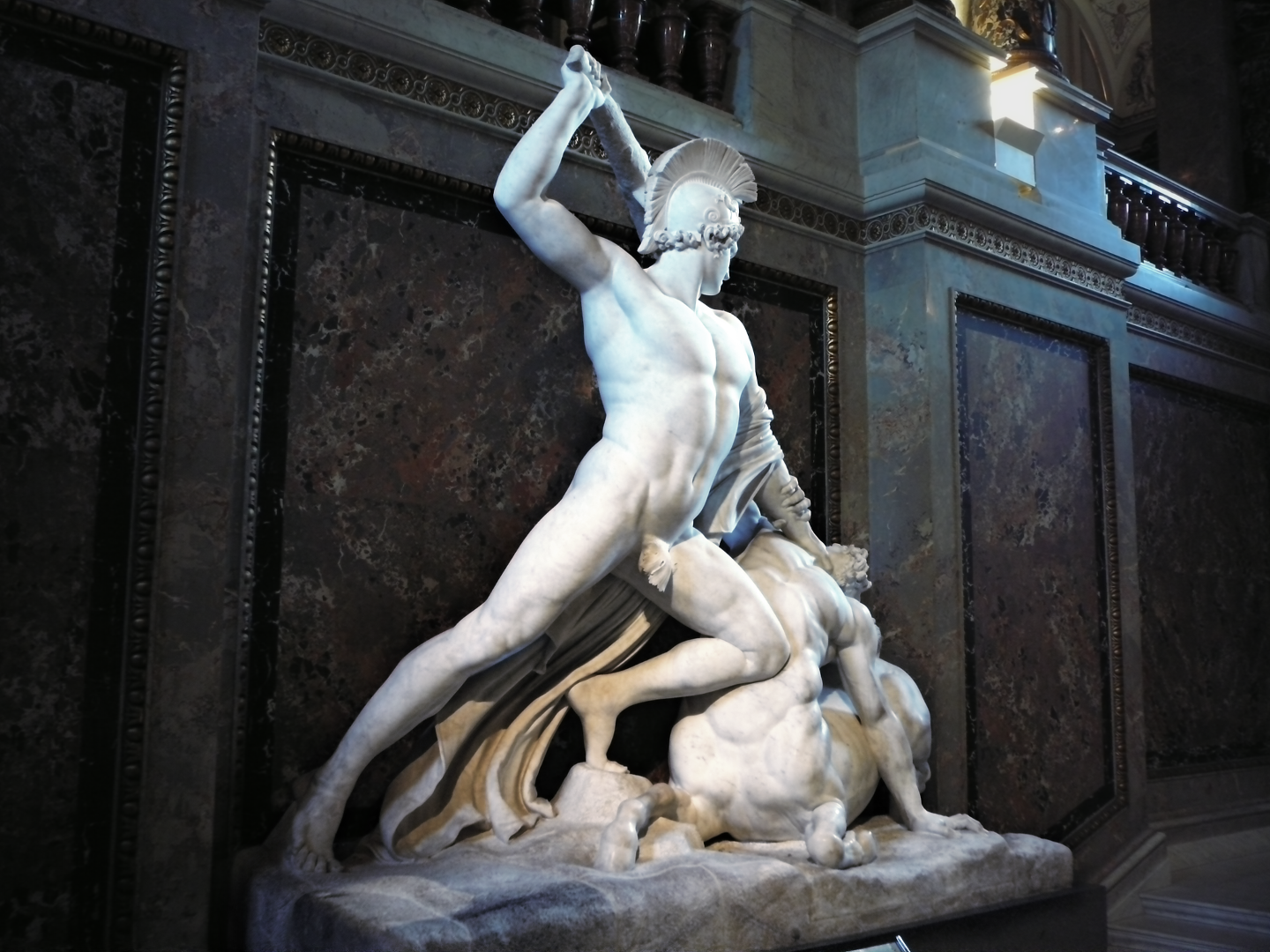
Canova, Theseus and the Centaur, 1790s.
looked into beauty and aesthetics and HEROIC figures a lot and even tomb monuments
Theseus fought centaurs who caused chaos at a friend’s wedding, after drinking too much and attempting to kidnap the bride.
classical antiquity stories are like this idk lol
so these artist are like finding new subject to depict from these stories
Canova liked to do hard subject/composition to do
every angle is interesting to look at
different from michealengelo
he had the freedom to do this because he had different kinds of patrons
Neoclassical sculpture: in Europe and the United States
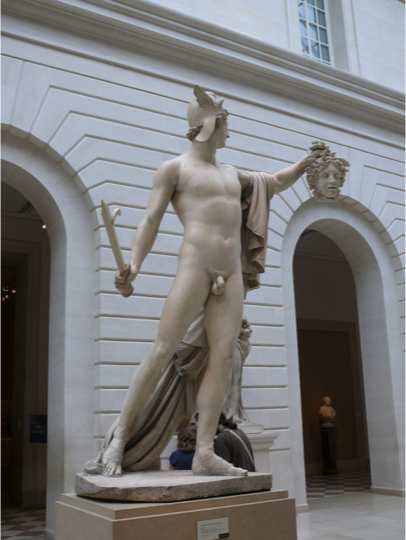
Canova, Perseus and Medusa, 1804.
In 1796, Napoleon invaded Italy and took the Apollo Belvedere to Paris.
Pope Pius VII commissioned
Canova’s version.
Neoclassical sculpture: in Europe and the United States
Industrial Revol
New wave of ideas, efficiency, and access to goods
Merchants, factories without restrictions, dirty neighborhoods, coal production, bad air quality
Neoclassicism is popular
Intellectualism and scientific discourse
mechanical arts
trains and canals
Joseph Wright of Derby and the Industrial Revolution in England
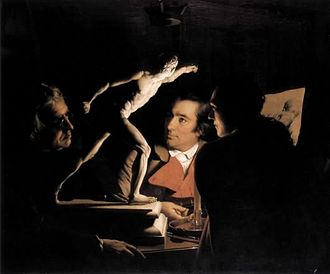
Joeseph Wright, Three Persons Viewing the Gladiator by Candlelight, 1765
Wright was part of the lunes society (met every Monday)
Birmingham
He denounced the equalities during the industrial revolution
During this era, it was a lot of artists
they’re looking at a tourist souvineer
Light-dark contrast gives mysterious and spiritual setting
science was becoming a “religion”
light = enlightenment idk
Joseph Wright of Derby and the Industrial Revolution in England
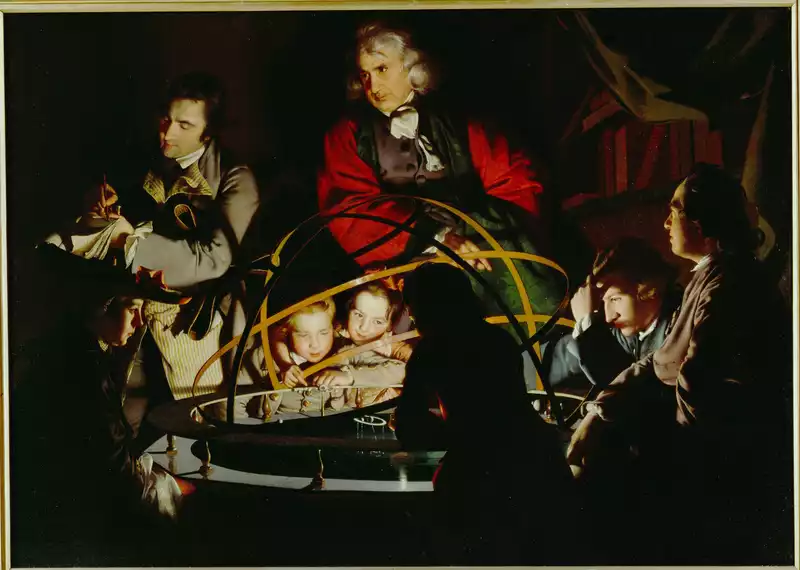
Wright, A Philosopher Lecturing on the Orrery, 1766
Demonstration/conversation piece of scientific thing - kinda a cool miracle device
Everyone looks with awe
candlelight for that mysterious, spiritual, enlightenment vibe, which was popular for the middle class
adopts religious painting parallels to give that vibe
Joseph Wright of Derby and the Industrial Revolution in England

Wright, An Experiment on a Bird in the Air Pump, 1760
Vacuum air pump
depicted the first man that started to experiment with animals and air like oxygen
Joseph Wright of Derby and the Industrial Revolution in England
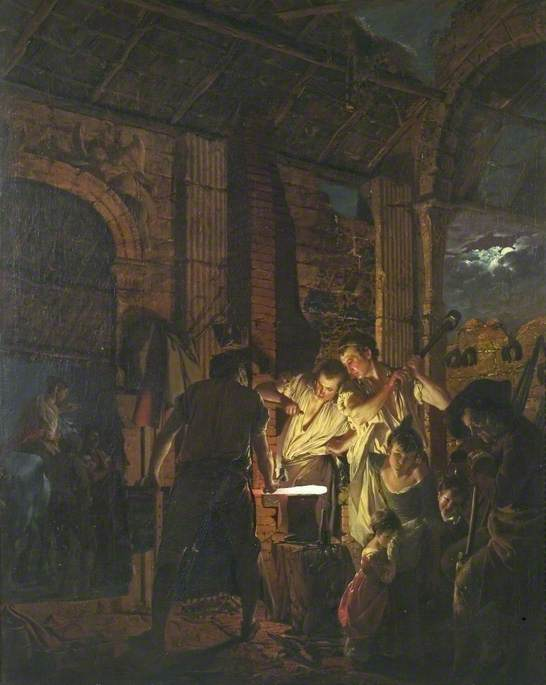
Wright, The Blacksmith’s shop, 1771
his patron's were middle class
this one show the coal/iron industry or sum like that
darkness is his signatures
Joseph Wright of Derby and the Industrial Revolution in England

Wright, Firework Display at Castel Sant'Angelo, 1776
fireworks were imported from china
increasingly used
element of awe for ppl
lunar landscapes become popular bc the emotions attached to that
Joseph Wright of Derby and the Industrial Revolution in England
Romanticism
based on straightforward idea unified aesthetic is NOT possible because the human experience is so diverse
there isnt just one aesthetic idea or path
nostalgic interest in antiquity, middle ages, and renaissance
interest in historical cultures outside the Greco-Roman past, to include Viking, Celtic and Nordic cultures
an interest in regions outside Europe, to include Egypt and Turkey, deemed exotic by western standards
an exploration of nature as vast, untamed, and powerful, as opposed to the classical aesthetic of a human-centered cultivated landscape.
an exploration of human emotions outside a classical restraint to include fear, awe, horror, anger – or, the sublime, which was defined as a higher level of magnitude than found in ordinary circumstances
Romanticism in England and Germany
Horace Walpole
an aristocratic writer, art historian and politician in England.
He revived the Gothic style. through his strawberry house building
He wrote the first Gothic novel, “The Castle of Otranto” in 1764.
Set in a haunted castle, fusing middle ages and terror. became an aesthetic
He wrote this based on a nightmare he had in his home.
Blended romance, ancient, modern, fantasy, etc
He sought an alternative to the Neoclassical style. Draws on Shakespeare
Romanticism in England and Germany
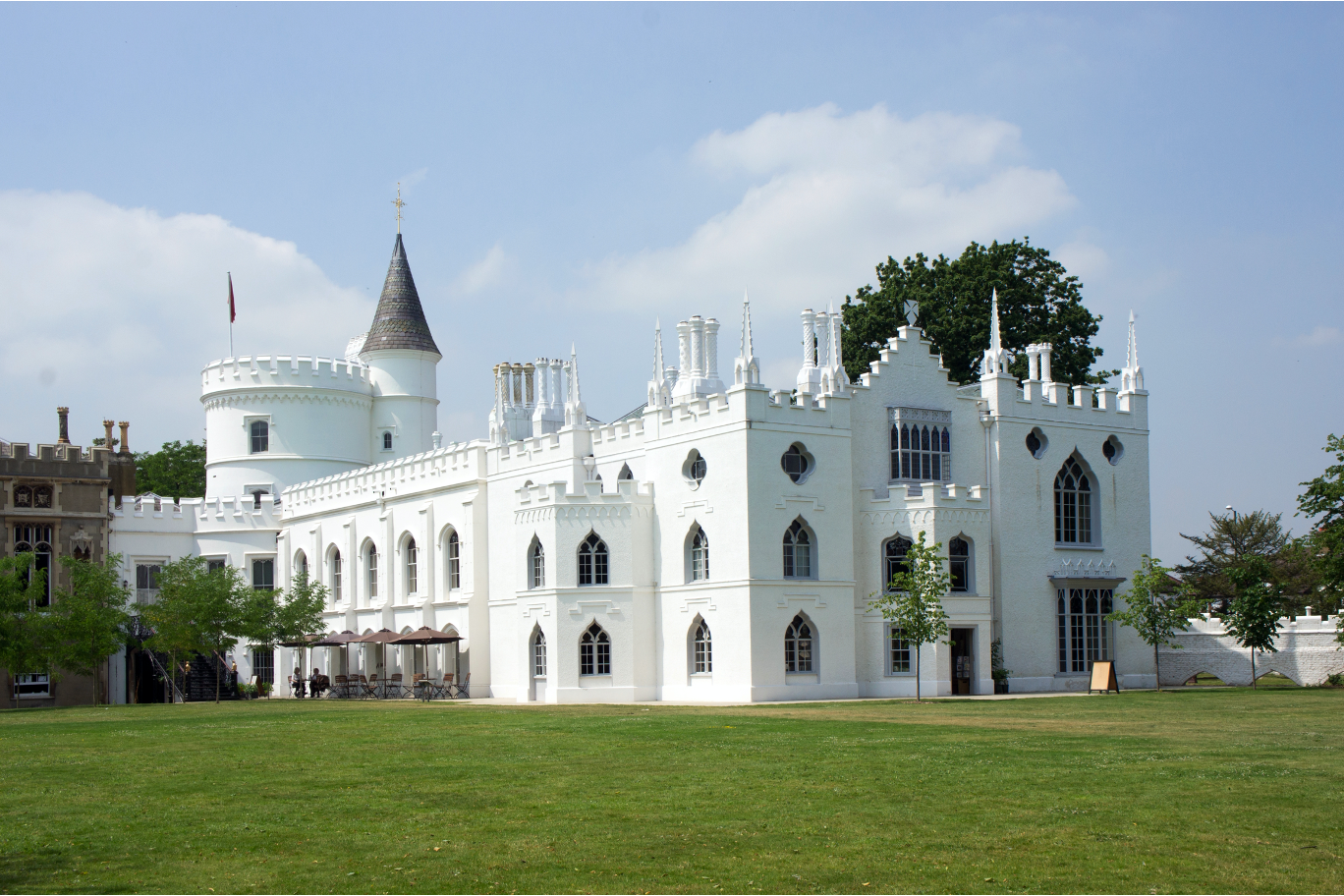
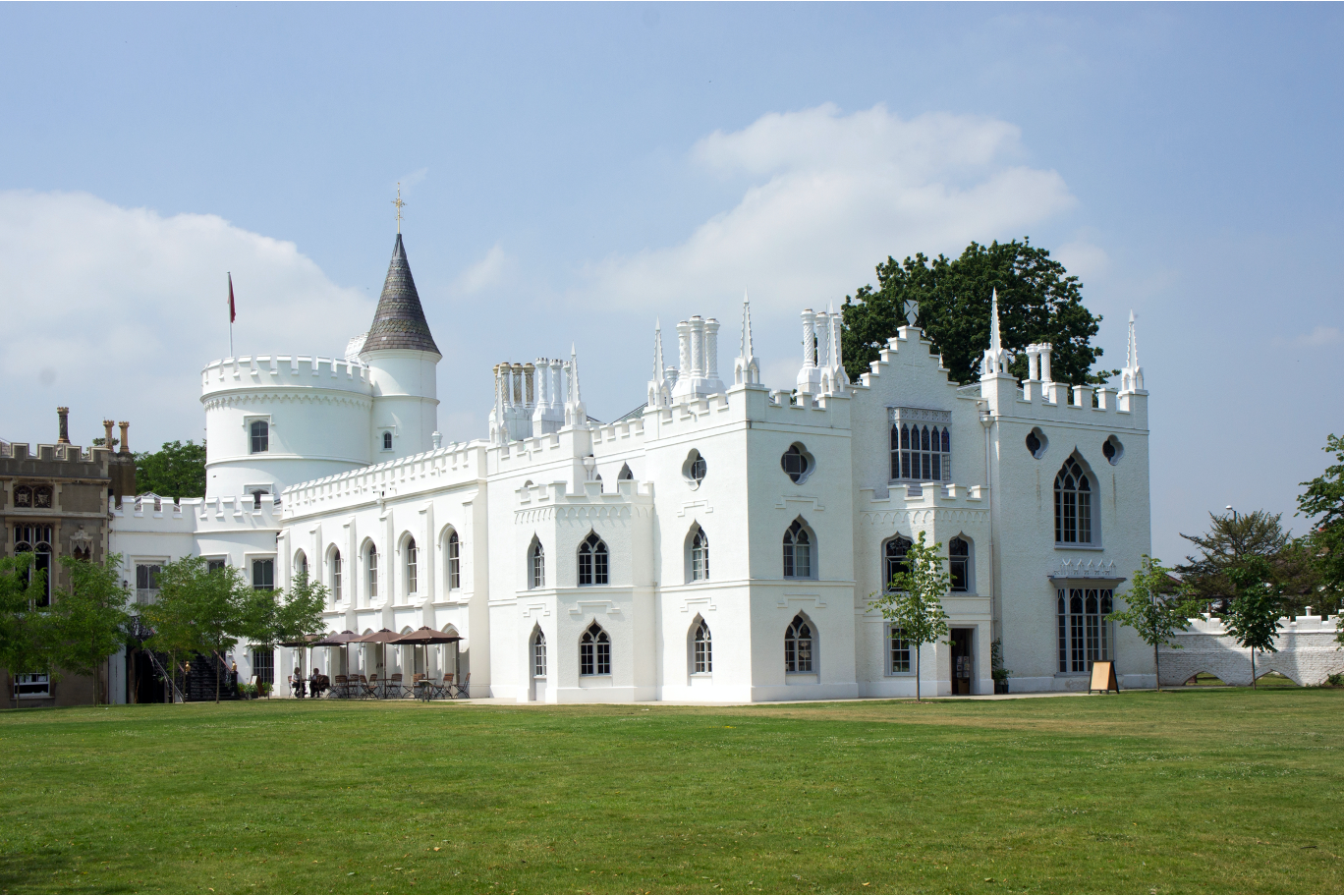
Horace Walpole, Strawberry Hill House, Twickenham, West London, 1749
First example of gothic revival style
Built cottage without a plan. Which is unlike neoclassism
takes on points of gothic style
WHITE which is kinda strange
1768 William Sawrey Gilpin publishes Essay on Prints that defines the “picturesque” as an aesthetic experience
Romanticism in England and Germany
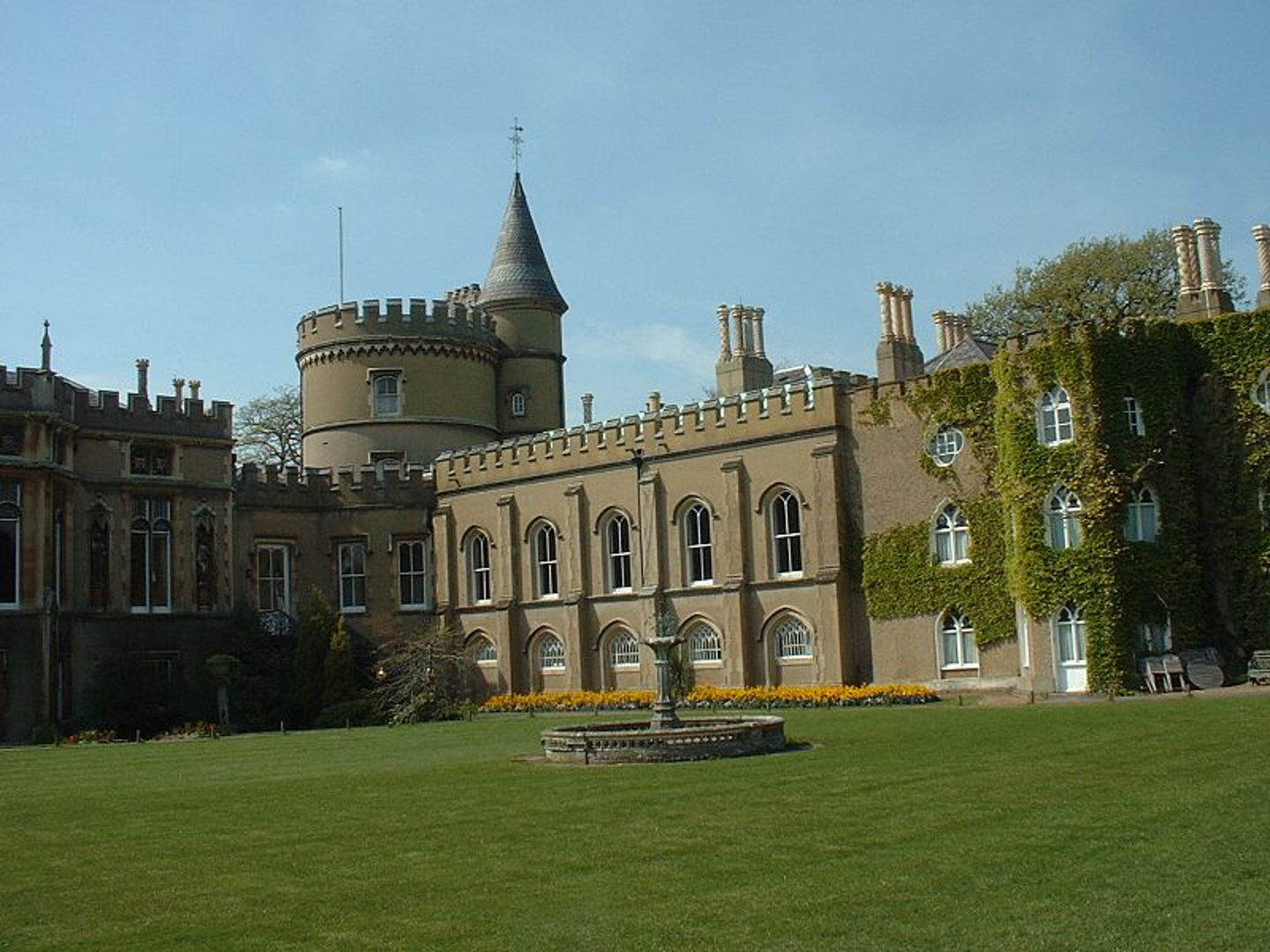
Horace Walpole, Strawberry Hill House BEFORE RESTORATION, Twickenham, West London, 1749
Romanticism in England and Germany
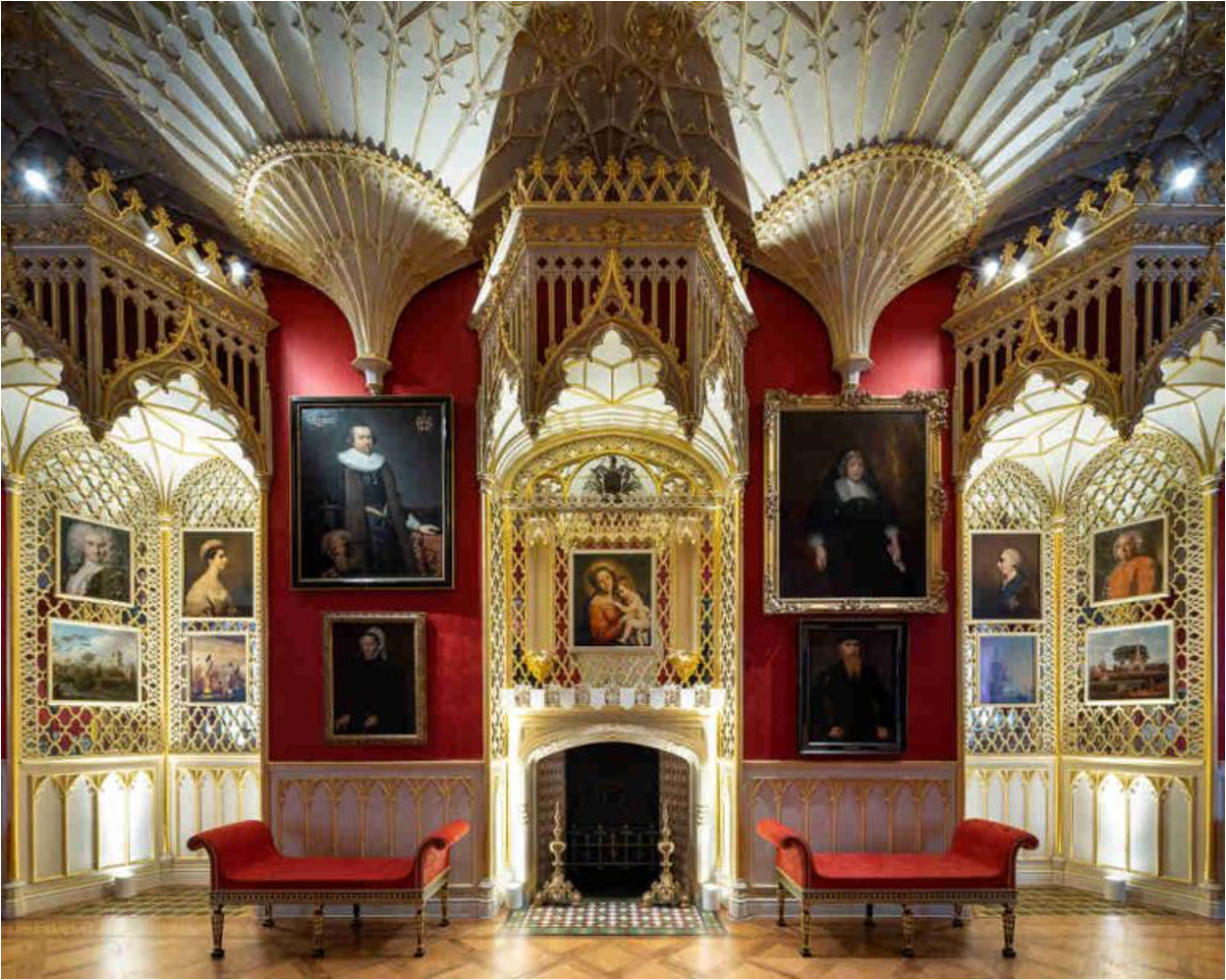
Horace Walpole, Strawberry Hill House’s GALLERY, Twickenham, West London, 1749
Paper mache ceiling
Romanticism in England and Germany
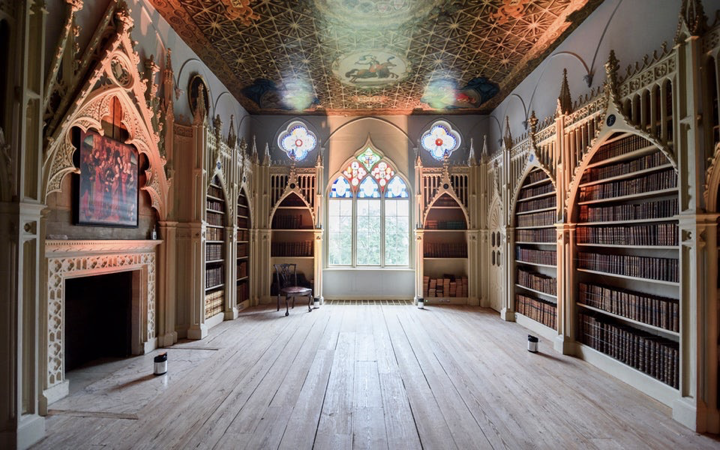
Horace Walpole, Strawberry Hill House’s LIBRARY, Twickenham, West London, 1749
Romanticism in England and Germany
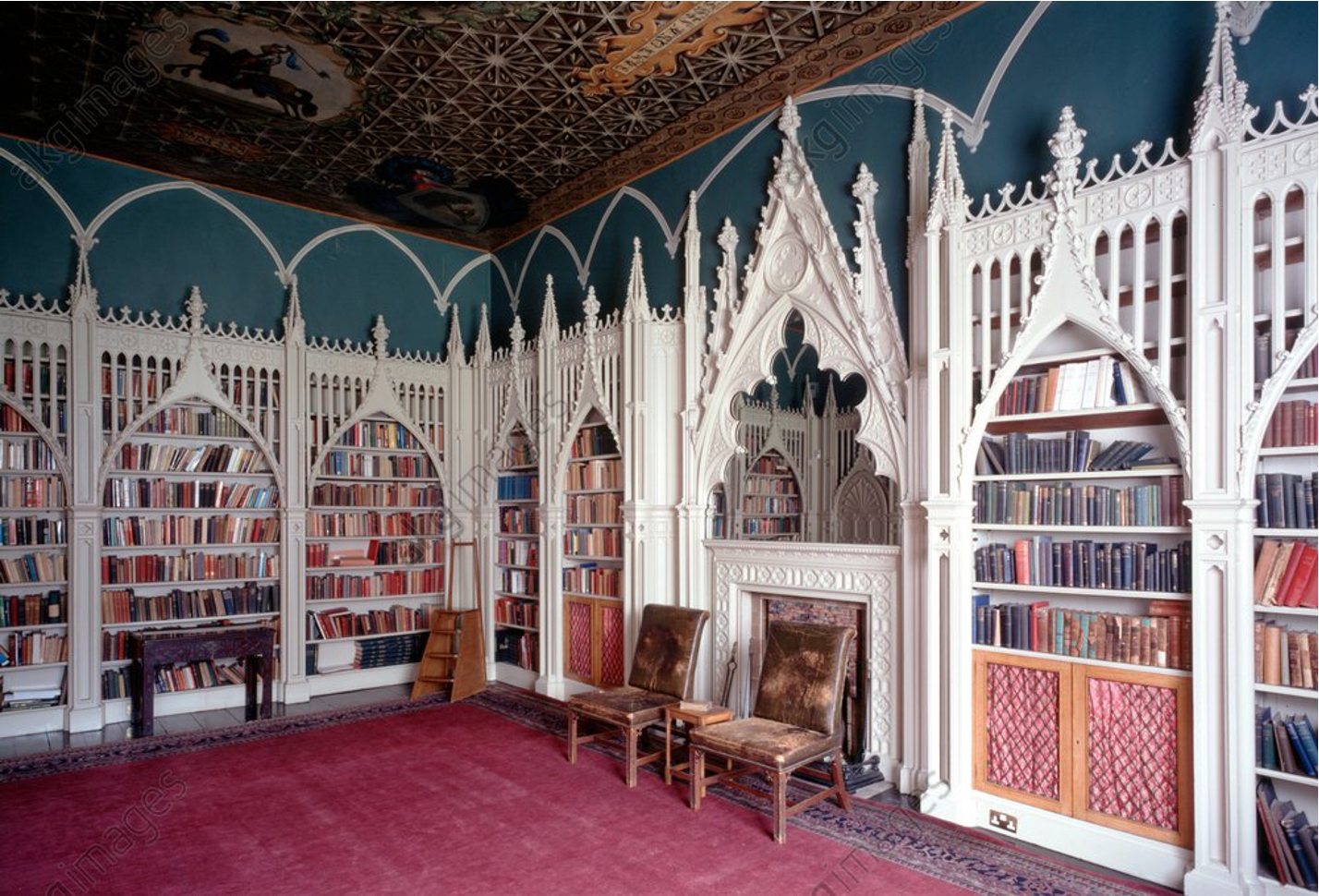
Horace Walpole, Strawberry Hill House’s LIBRARY, Twickenham, West London, 1749
Romanticism in England and Germany
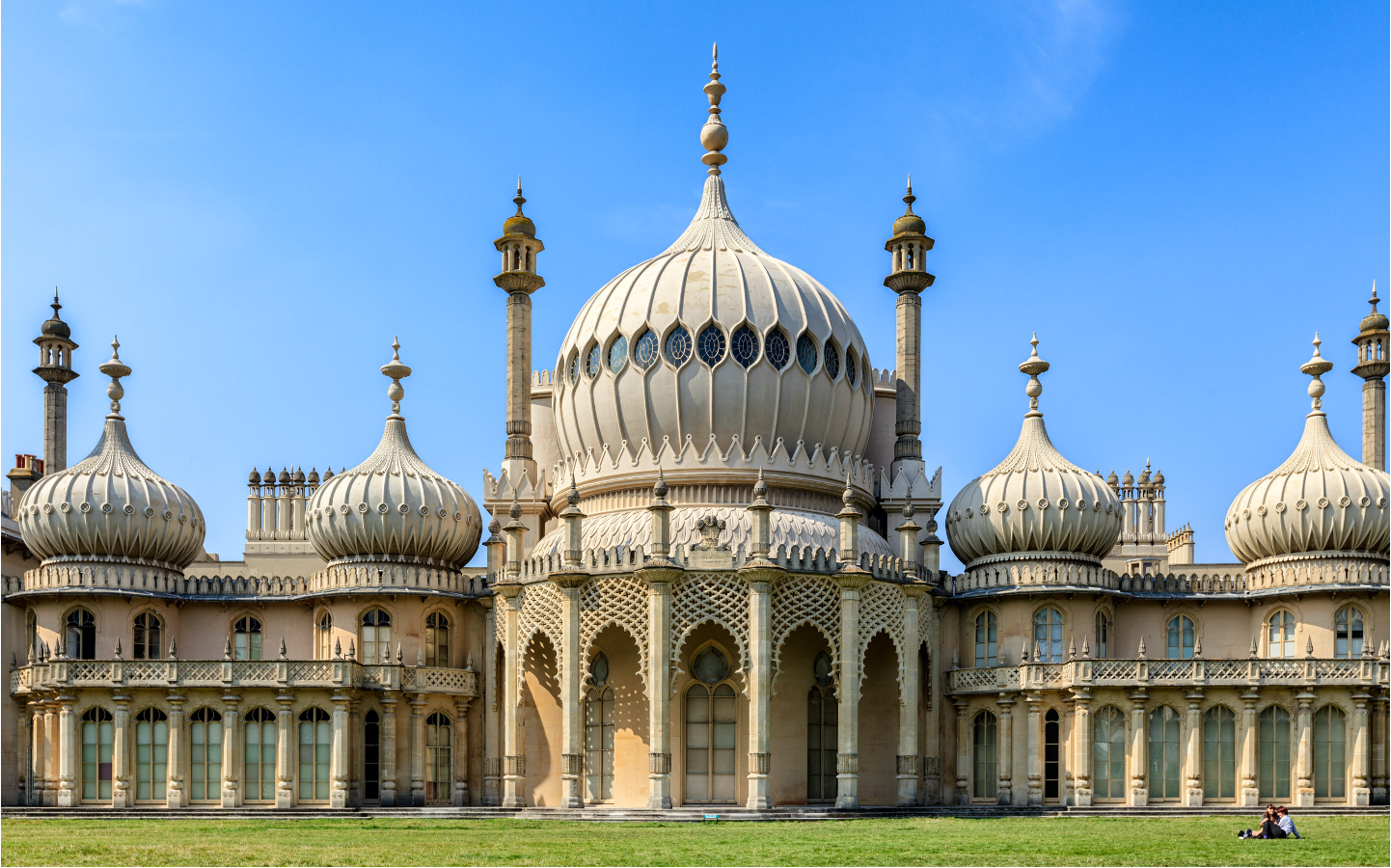
John Nash, Royal Pavilion at Brighton, 1815
British Raj style begin in 1787 for King George IV. Nash’s work is from 1815.
Artist are bringing in more exotic and fantasy like buildings
at Brighton beach
Unlike neoclassism, the style kinda of mismatched to create something new
Romanticism in England and Germany
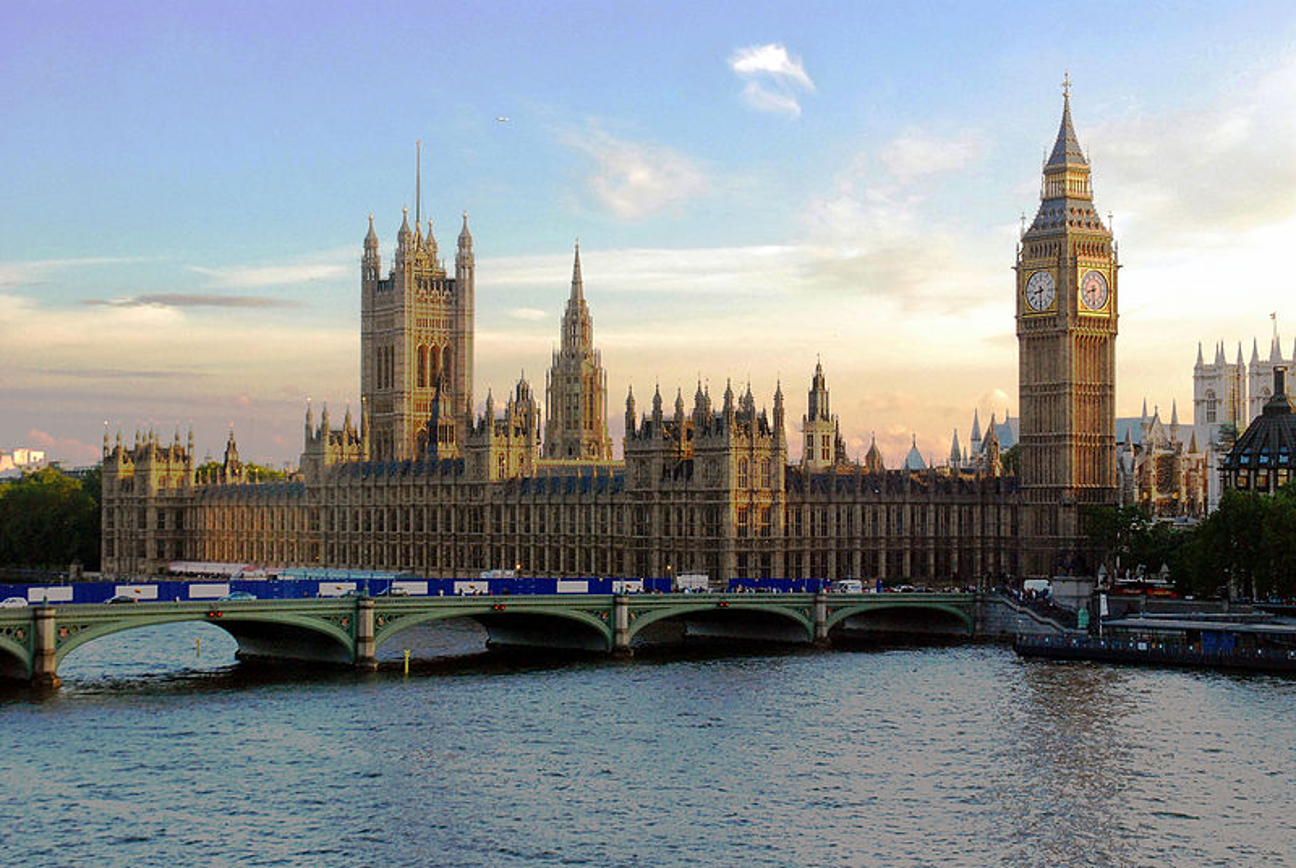
Charles Barry and Augustus Pugin, Palace of Westminster, begun in 1840 to replace medieval parliament building destroyed in 1834 fire
interesting how US gov building is neoclassism and theirs is gothic
Romanticism in England and Germany
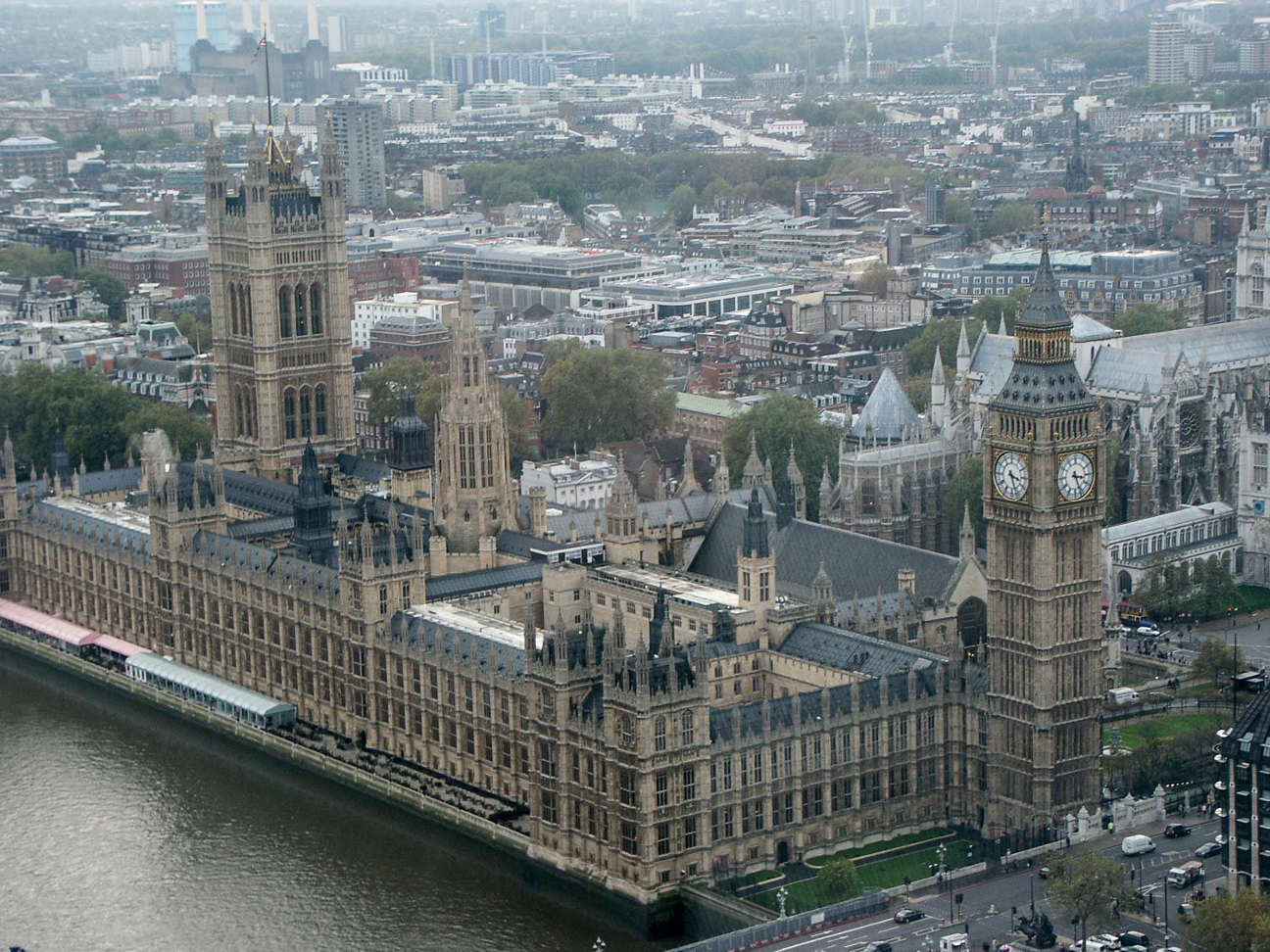

Joseph Mallord William Turner, 1834, “Burning of the Houses of Lords and Commons. English Romantic painter.
unlike what we have not seen in art up until romanticism. very interesting that the gov building burning is the subject
horrifying but maybe beautiful/strong = romanticism
Romanticism in England and Germany
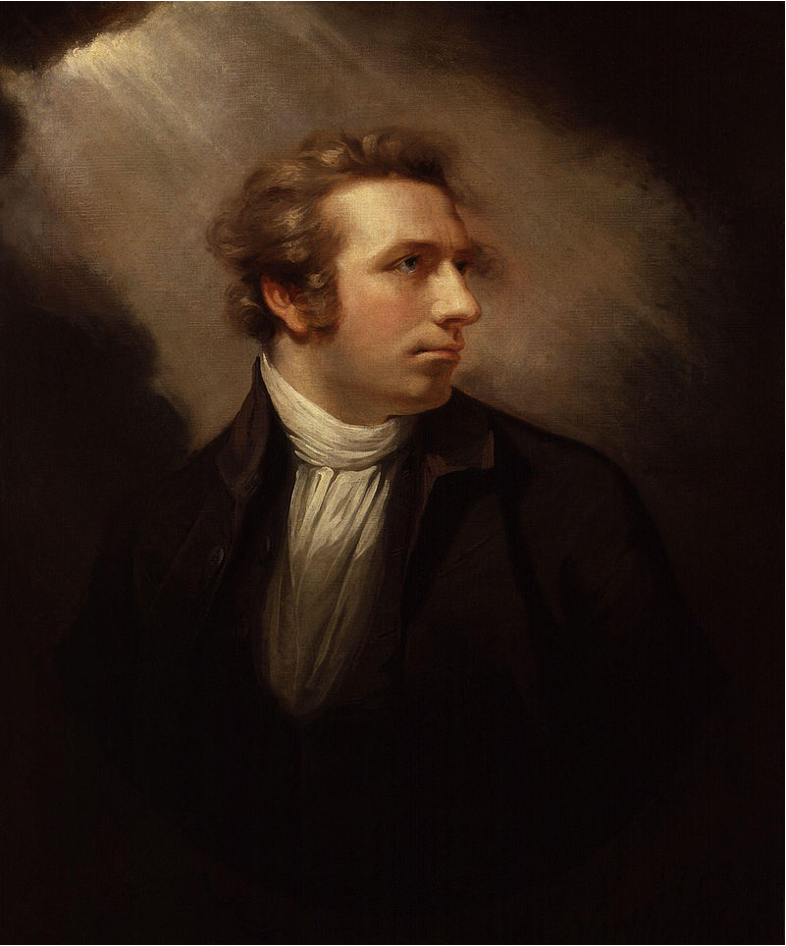
Northcote, London, British portrait painter
studied with Joshua Reynolds at the Royal Academy.
Went to Italy in 1775, returned thee years later, when Henry Fuseli was there, establishing his career.
Very different because the unique light and the fact that he not looking at us
dramatic, mysterious
Romanticism in England and Germany
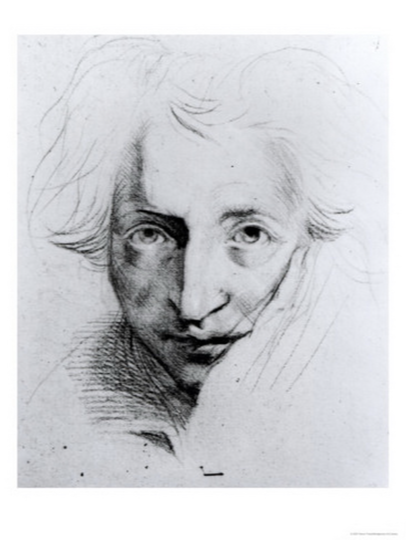
Fuseli, Self Portrait, V&A. Drawing. In his forties.
Known for his wit and for defying convention. Hands are his artistic tools.
kinda modern looking
hes thinking and different subtle psoe
Romanticism in England and Germany
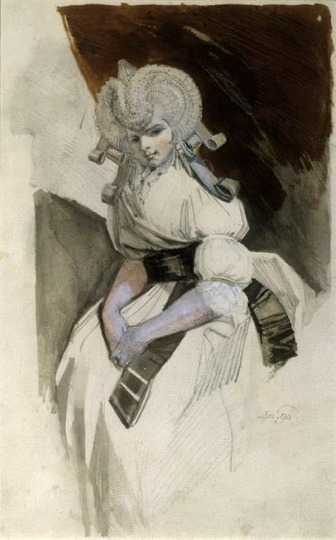
The Debutante, 1807
did a lot of caricatures
testing boundaries of portraying beautiful young woman
Romanticism in England and Germany
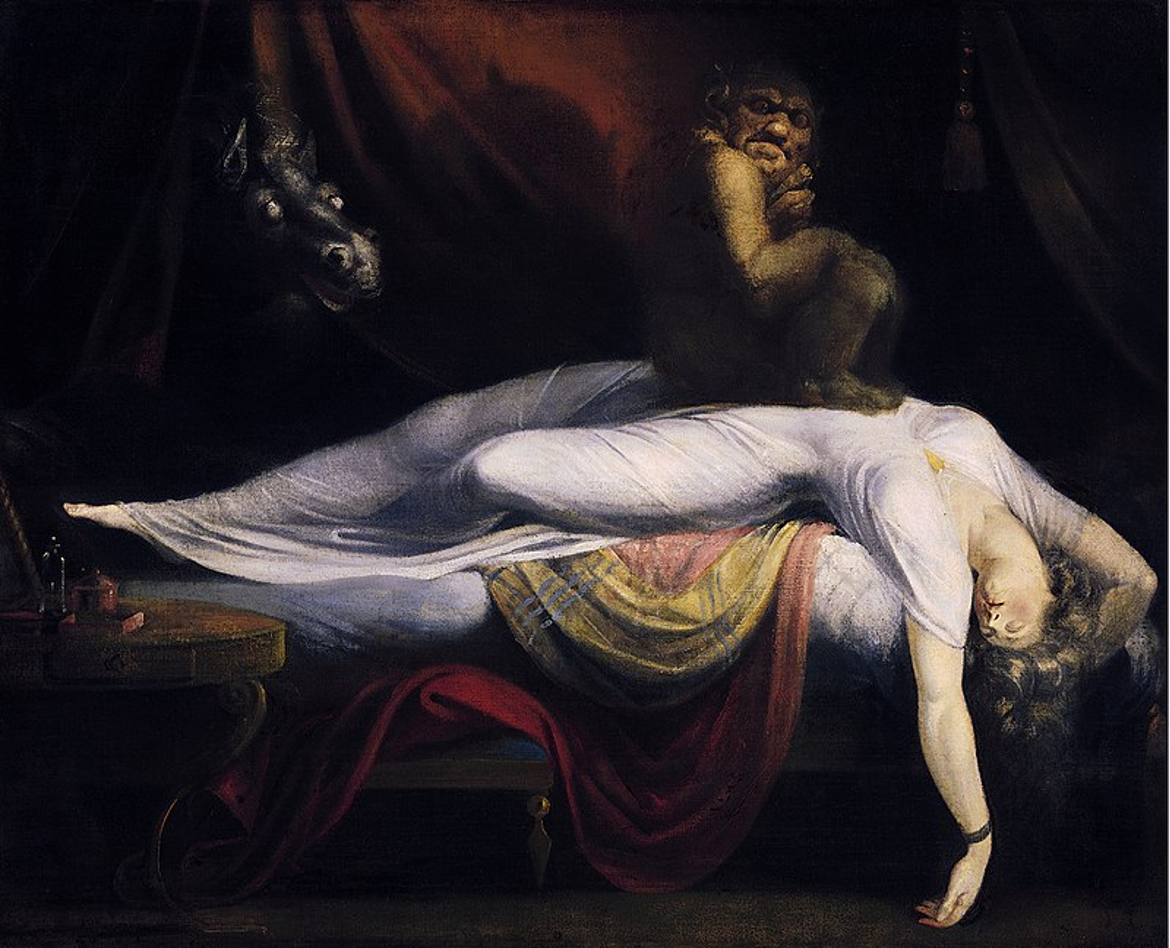
1781 Johann Heinrich Fuseli’s The Nightmare illustrates an early example of the exploration of the subconscious
one of the first to explore subconscious which started a crazy trend
Swiss Artist, Keeper of RA Schools. Friend of William Blake. Traveled to London in 1764, met Joshua Reynolds, studied in Rome 1770-78. This painting was exhibited in London, during the annual summer exhibition of the Royal Academy in 1782. Influenced by William Shakespeare. He was an intellectual, with radical ideas. His earliest patrons were the Coutts family, whose wealth came from Virginia tobacco plantations. Coutts paid for his to study in Rome. But Fuseli was also an abolitionist, and in the 1790s, his major patron was William Roscoe, a banker and abolitionist. This painting shows a woman deep in sleep. Incubus/demon sits on her chest. “Nightmare seduced by a demon.” Night demons, both male and female, date back to antiquity. Sleep paralysis. In Swedish folklore, it is a “mare” or goblin. 13c. Upon display, people were both horrified and fascinated. Anticipated Surrealism, Freud, Jung, ideas on the unconscious, sexuality was disturbing. Folklore, tales of witches and demons inspired Fuseli. Woman as sex object. Influenced Mary Shelley, Frankenstein. 1818, Edgar Allan Poe evoked this painting in his short story “The Fall of the House of Usher” from 1839.
Romanticism in England and Germany
Romanticism in England and Germany